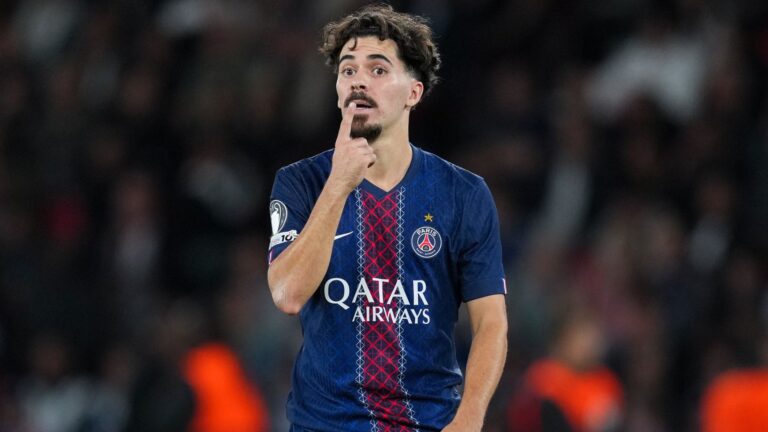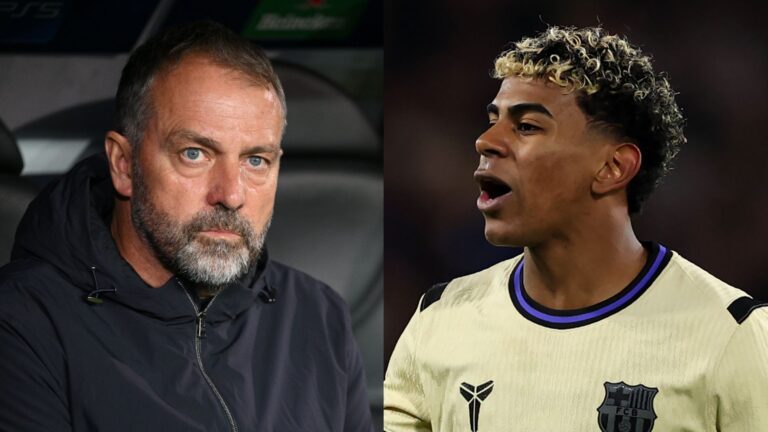- Balboa pushes for lifting financial restrictions
- Endorses shift to a full-year calendar
- Advocates for equilibrium in nurturing talent



Unlocking MLS Potential: Balboa’s Bold Vision for League Evolution
In an era where Major League Soccer is rapidly expanding and attracting global attention, legendary defender Marcelo Balboa is championing transformative changes to propel the league to new heights. With MLS now boasting 29 teams and set to welcome San Diego FC in 2025, Balboa’s insights highlight the need for financial flexibility and strategic alignments to compete on the world stage.
Easing Financial Constraints for Star Power
Legendary USMNT figure Marcelo Balboa has voiced strong opinions on Major League Soccer’s economic framework and regulations for signing players, emphasizing that it’s time for the league to “remove the restrictions” on teams to drive exponential progress.
The ex-MLS standout stressed the value of relaxing the salary cap, enabling clubs to attract top-tier global stars, much like LA Galaxy did with David Beckham in the past or Atlanta United with players like Josef Martínez. This approach, he argues, could elevate the league’s competitiveness.
“The expansion into new markets has been incredible,” Balboa shared during his CBS Sports Golazo America appearance. “Look at how fans in Austin have embraced their team, or the buzz around Cincinnati’s state-of-the-art venues, and even upcoming additions like San Diego. These developments are a massive win for the sport here.”
“But the real question is, how do we unleash these clubs? Allow them to invest heavily in elite talent beyond just a handful of marquee names? Expanding the salary cap would be a game-changer,” he added. For more on MLS salary cap rules, check out the official MLS roster regulations.
Aligning Schedules for Global Integration
Balboa also backs the idea of switching to a fall-to-spring format, synchronizing MLS with European leagues to streamline transfers and player movements.
“Adopting a calendar-year system would be crucial, matching the rest of the soccer world,” he explained. “This way, we can handle transfers efficiently without the mismatch in windows, unlike our current summer-focused setup versus Europe’s. The league has made tremendous strides, yet we’re holding ourselves back by not fully embracing the international market.”
“We’ve come so far since 1996, when skeptics gave us just a few years. Now, three decades on, MLS features world-class arenas, dedicated supporters, and ongoing growth. It’s an exciting time,” Balboa reflected.
Striking a Balance in Talent Development
While advocating for more international imports, the former star insists that some teams will continue prioritizing homegrown players, creating a healthy mix across the league.
“Even with relaxed rules, not every club will chase global superstars,” Balboa noted. “Out of 30 teams, maybe a few will go all-in on high-profile signings, but others will build around American talent. It’s about finding that equilibrium, similar to leagues in Asia or Africa where local and foreign players coexist.”
“Teams like Philadelphia Union showcase this with multiple homegrown starters. That’s the role of academies – to develop young prospects we can export to Europe at 17 or 18, and welcome back later in their careers.” As of 2023, MLS academies have produced over 100 players who’ve moved to European clubs, underscoring this potential. Learn more about MLS player development at U.S. Soccer’s youth programs.
Recently, the Colorado Rapids honored Balboa’s enduring impact by retiring his No. 17 jersey. During his tenure with the Rapids, he played over 150 matches and earned 127 international caps for the USMNT.
MLS officials are actively considering a shift to the European calendar model, though no final decisions have been announced yet.
Who is Marcelo Balboa and His Impact on MLS
If you’re a fan of Major League Soccer (MLS), the name Marcelo Balboa likely rings a bell. As a former MLS star and U.S. Soccer Hall of Famer, Balboa has left an indelible mark on American soccer. Known for his defensive prowess and that iconic bicycle kick goal in 1994, Balboa played a pivotal role in the early days of MLS, helping establish the league’s foundation. Today, as a commentator and analyst, he’s vocal about the need for MLS growth, urging the league to evolve beyond its current constraints.
Balboa’s experience spans over a decade in professional soccer, including stints with teams like the Colorado Rapids. His insights into MLS financial structure and player rules come from firsthand knowledge, making his recent calls for change particularly compelling. In interviews, he’s emphasized how revamping these elements could propel MLS to new heights, competing more fiercely on the global stage.
Balboa’s Urgent Call: “Take the Handcuffs Off” MLS
In a bold statement, former MLS star Marcelo Balboa has urged the league to “take the handcuffs off” by overhauling its financial structure and player rules. He argues that the current setup, while designed to ensure parity and financial stability, is stifling accelerated MLS growth. Balboa points out that restrictive salary caps and designated player rules limit clubs’ ability to attract top international talent, hindering the league’s global appeal.
Speaking on podcasts and sports shows, Balboa has highlighted how these “handcuffs” prevent MLS from matching the dynamism of leagues like the Premier League or La Liga. By revamping MLS financial structure, he believes the league could foster more investment, leading to better player development and fan engagement. His message is clear: it’s time for MLS to embrace change for sustainable, accelerated growth.
Breaking Down the Current MLS Financial Structure
The MLS financial structure is unique, built around a single-entity model where the league owns all teams and controls player contracts. This setup promotes parity but comes with limitations. Key components include:
- Salary Cap: A strict limit on team spending, currently around $5 million per team, excluding designated players.
- Designated Player Rule: Allows clubs to sign up to three high-profile players whose salaries partially count against the cap, like Lionel Messi at Inter Miami.
- Allocation Money: Funds provided by the league to help teams manage rosters and signings.
While this structure has helped MLS avoid the financial pitfalls seen in other leagues, critics like Balboa argue it restricts clubs from making bold moves. Revamping MLS financial structure could involve increasing salary caps or introducing more flexible spending models, encouraging greater investment in talent and infrastructure for MLS growth.
Challenges Posed by Existing Player Rules in MLS
Player rules in MLS, such as roster limits and homegrown player quotas, aim to develop domestic talent but can feel restrictive. For instance, teams are capped at 30 players, with specific slots for international signings. Balboa contends these rules slow down the influx of global stars, which is crucial for elevating the league’s quality and viewership.
Imagine if MLS could freely compete for talents like those in Europe’s top leagues-Balboa envisions this as a game-changer for accelerated MLS growth.
Proposed Revamps for Accelerated MLS Growth
To “take the handcuffs off,” Balboa suggests several revamps to the MLS financial structure and player rules:
- Increase salary caps gradually to allow more competitive bidding for players.
- Expand the designated player slots, making it easier to sign marquee names without cap constraints.
- Revise international roster rules to accommodate more global talent, boosting on-field quality.
- Encourage private investment by loosening the single-entity model, attracting billionaire owners eager to spend.
These changes could mirror successful models in other sports, leading to exponential MLS growth. By fostering a more open market, the league might see increased TV deals, sponsorships, and fan bases worldwide.
Benefits of Revamping MLS Financial Structure and Player Rules
Embracing Balboa’s vision offers numerous benefits for MLS growth. Firstly, a more flexible financial structure could attract top-tier players, elevating the league’s competitiveness and entertainment value. Fans would enjoy higher-quality matches, potentially increasing attendance and viewership.
Economically, revamping player rules in MLS could lead to:
- Boosted revenue from international broadcasting rights.
- Enhanced merchandise sales driven by star power.
- Greater youth academy investments, nurturing homegrown talents for long-term sustainability.
Moreover, these changes could position MLS as a true global contender, drawing in diverse audiences and solidifying its place in the soccer world.
Practical Tips for MLS Executives Considering Revamps
If you’re an MLS executive or stakeholder pondering these changes, here are some practical tips to implement Balboa’s ideas:
- Conduct stakeholder surveys to gauge support for increased salary caps.
- Pilot flexible rules in select markets, like expanding designated players in expansion teams.
- Collaborate with international leagues for best practices on financial revamps.
- Monitor metrics like attendance and ratings post-changes to measure accelerated MLS growth.
Starting small can build momentum toward comprehensive reforms.
Case Studies: Lessons from Other Soccer Leagues
Looking abroad provides valuable insights. The Premier League’s lack of salary caps has fueled massive growth, with clubs like Manchester City investing heavily in talent. Similarly, Serie A’s financial deregulation in the 1990s attracted stars, boosting global appeal.
Here’s a quick comparison:
| League | Financial Model | Key Benefit | Growth Impact |
|---|---|---|---|
| MLS | Strict Salary Cap | Parity | Stable but slow growth |
| Premier League | Open Spending | Star Talent | Explosive revenue increase |
| La Liga | Flexible Caps | Global Appeal | High international viewership |
These case studies show how revamping financial structures can accelerate growth, a lesson MLS could apply.
First-Hand Experiences: Voices from Former MLS Players
Beyond Balboa, other former players echo his sentiments. Take Landon Donovan, who has spoken about the limitations of player rules in MLS during his career. “We were always playing catch-up because of the caps,” he once noted in an interview. Similarly, ex-MLS goalkeeper Tim Howard has shared stories of how financial constraints affected team dynamics and recruitment.
These first-hand experiences highlight the real-world impact of current rules. Players like Balboa aren’t just theorizing-they’ve lived the restrictions and seen the potential for more. By listening to these voices, MLS can chart a path toward true accelerated growth.
As the league continues to expand with new teams and stars like Messi, Balboa’s call to revamp the MLS financial structure and player rules feels timelier than ever. It’s about unleashing the full potential of American soccer.









